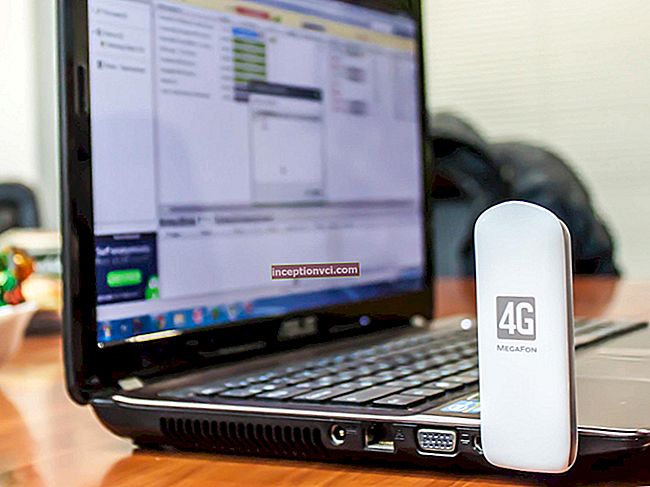Introduction
People tend to err, that's why they are people. One such misconception is the opinion of people that the new is always better than the old. This is partly true, but in the field of processor interfaces it does not always work. This is exactly the case with the LGA 1366 socket, which entered the market in 2008 almost simultaneously with the 32nm Intel Nehalem technology. The next processor socket had to wait from Intel for a year, and in 2009 LGA 1156 was introduced for mass production, but the new socket did not quite meet the requirements of the high-end market. There were several prerequisites for this. While the latest SATA 6 Gb / s and USB 3.0 technologies are becoming available to a wide range of consumers, and the new socket, although it supported the PCIe 2.0 data transfer interface necessary for the operation of these technologies, not everything was so smooth and the data lines were clearly not enough. Sacrificing one of the 16 PCIe 2.0 lanes to the new SATA and USB technologies meant that they had to be “stolen” from the graphics subsystem, something gamers would never put up with. Some manufacturers tried to use special bridges that turn as many as four 2.5 Gbps lines into two 5 Gbps lanes, but everyone was well aware that for the mass introduction of new high-speed controllers, a new platform would be required that would be able to meet the need for the required number of PCIe lanes. 2.0

Such a platform, undoubtedly, could become the X58, which already has support for 36 PCIe 2 lines of which it was possible to meet the need for the graphics subsystem by giving it 32 lines, and the remaining four could be used for new USB and SATA controllers. However, from hitting the high-end segment, the X58 platform was separated by the absence of a premium processor, which appeared only in March of this year.

Of course, we're talking about the Core i7-980X, Intel's new six-core processor. Only in tandem with this processor did the X58 platform manage to attract the attention of enthusiasts. Let's take a look at the characteristics of two new products of this year, which are based on the X58 for the LGA1366 socket.

In order to examine the capabilities of the ASRock X58 Extreme3 motherboard, let's try to compare it with a similar solution from Gigabyte, with a similar set of functional functions, model GA-X58A-UD3R. Let's compare both motherboards for feature set and test both motherboards.
Functionality of the boards in question



ASRock X58 Extreme III
ASRock has so far released only two solutions supporting the new high-speed USB 3.0 interface, but only the motherboard in question has a controller soldered directly to the surface of the board, while previous solutions support USB version 3 by installing an external expansion card. ... Also, the developers have not forgotten about full support for SATA 3.

The solution of the graphics subsystem of the ASRock X58 Extreme3 is quite interesting. The board supports three PCIe slots, two of them are capable of operating in x16 mode with PCIe 2.0 support, and the third slot uses only four 1.1 lanes provided by the chipset. A rather controversial add-on in the graphics subsystem, since the third slot with such characteristics is clearly not enough for installing a modern high-speed video card, although such a decision is dictated by the manufacturer's desire to use two full-speed x16 slots for installing premium video cards, and four channels are given to ensure the operation of SATA and USB 3.0 controllers ... This solution limits the expediency of using only a pair of video accelerators operating in SLI or CrossFire mode with this motherboard.A third PCIe 1.1 x4 slot that sits between the two full speed slots provides improved cooling.
This motherboard from ASRock is one of the most inexpensive X58-based solutions on the market. The SATA 600 interface is implemented using a Marvell 88SE9128 controller installed on the board, which also provides one Ultra ATA port on the board. The board supports legacy floppy, keyboard and serial ports, the presence of which will seem to many to be a relic of the past and unnecessary clutter on the board's surface, but that is what it is.

The implementation of eSATA, unfortunately, is done through the same 88SE9128 controller, which provides two internal SATA ports, one of which is parallel to the external eSATA, so only one of them can be used.
Another relic of the past is a 40mm cooler based on a voltage regulator, but its operation speed is not high, so if you decide to use a water block for cooling, you will have to choose a cooler "quicker". On the other hand, not everything is so bad, since low revs mean little noise.
The board is made on a black PCB. The layout of the connectors on the PCB surface of the motherboard is quite successful. The front panel connectors and the soundbar connectors are very conveniently moved forward, which have moved closer and are located above the lower PCI x16 slot.

The scope of delivery is rather scarce. Only six SATA cables, a ribbon cable for connecting a floppy drive, a bridge for organizing the SLI mode and a disk with drivers were found in the box. It's a shame, of course, not to find some useful little thing in the box, especially for the rather considerable cost of the product.
unpacking the motherboard box
BIOS functions
The BIOS menu allows you to access extensive settings. It is possible to adjust the supply voltage, memory frequencies and processor socket. It is possible to adjust the memory supply voltage, quite within a wide range, in addition, it is possible to save user settings in three profiles.


The DRAM Timing Control submenu also provides a decent set of tunable parameters that are less than those of the competition, but this set is still quite enough for most overclockers.


Each menu has the ability to automatically configure.
video review of BIOS functionality and performance testing
Overclocking capabilities.

The above table shows the ranges of possible BIOS setting ranges. In Most parameters, ASRock board provides smaller parameter setting ranges. Below are the diagrams of the overclocking of the processor with the value of the multiplier x12 and x21 and memory.



The product from ASRock showed a lag in overclocking the processor, albeit insignificantly, but outstripped the competitor in overclocking memory
Test bench configuration.

Composition of tests



Test results Test results in game packages Crysis andModern warfare 2 During testing, unused controllers are usually disabled, but when testing for this pair of motherboards, an interesting result was obtained: when the SATA controller was disabled, the 600 led to an increase in performance in tests for the ASRock X58 Extreme III motherboard. Disabling both sata and usb 3.0 controllers at the same time led to an even more significant increase in performance. Later, the reason for this behavior of the product from ASRock was discovered at the end of the tests. Below are the benchmark results, with ASRock X58 Extreme III showing the benchmark results with disabled and enabled controllers. As the load of the graphics subsystem increased, the gap between the motherboard and Gigabyte decreased, this result proves that the problem described above has more to do with the processor. Testing in this package shows almost identical results, reducing the gap to almost a minimum. Another gaming test A more or less noticeable gap between the boards in the Dirt2 test completely disappears in S.T.A.L.K.E.R .: call of Pripyat, which once again proves the identity of the systems' capabilities in games. Video decoding performance testing The test shows a loss of two seconds for the ASRock motherboard when decoding audio, but a gain of three seconds when testing with a video stream. And again the parity of the two products. Once again, we have the same results, while the effect of disabling controllers on performance is more and more clearly visible. Application Performance and File Compression Testing once again stands out with a sharp drop in performance testing with a disabled controller. Performance testing in synthetic tests. Sandra, perfect for testing individual components, shows an even wider performance gap for ASRock when the controller is off. Later, we found out that this difference was caused by the BIOS version and after the update, the differences disappeared during testing. Definition of energy efficiency The motherboard from Gigabyte shows a lower level of power consumption and, as a result, less heating, both in idle mode and under load. Conclusion The appearance of support for USB 3 and SATA 600 in motherboards based on the X58 can undoubtedly be considered a revolutionary step. Both solutions are not capable of supporting three dual-slot video accelerators due to the limitations of the case, and besides, the manufacturer himself used PCIe 1.1 for the third slot in ASRock's motherboard. The difference in performance according to the test results was less than 0.7%, and this despite the fact that the Gigabyte motherboard costs an average of 25 "evergreen American rubles" more expensive, which is also important. ASRock X58 Extreme III motherboard issue related to testing issues with enabled and disabled controllers have been resolved by releasing new BIOS firmware version 1.52 or later.

































